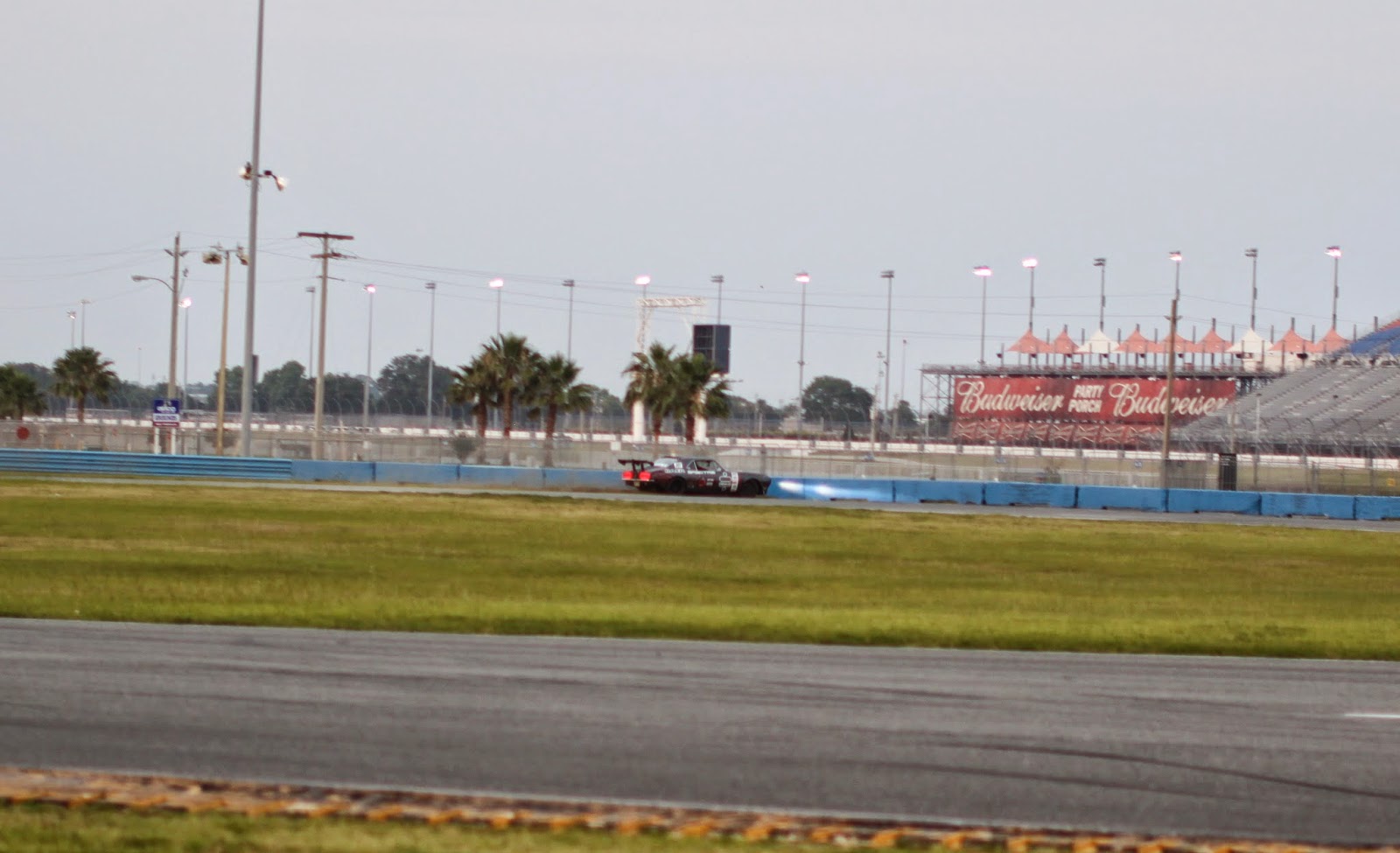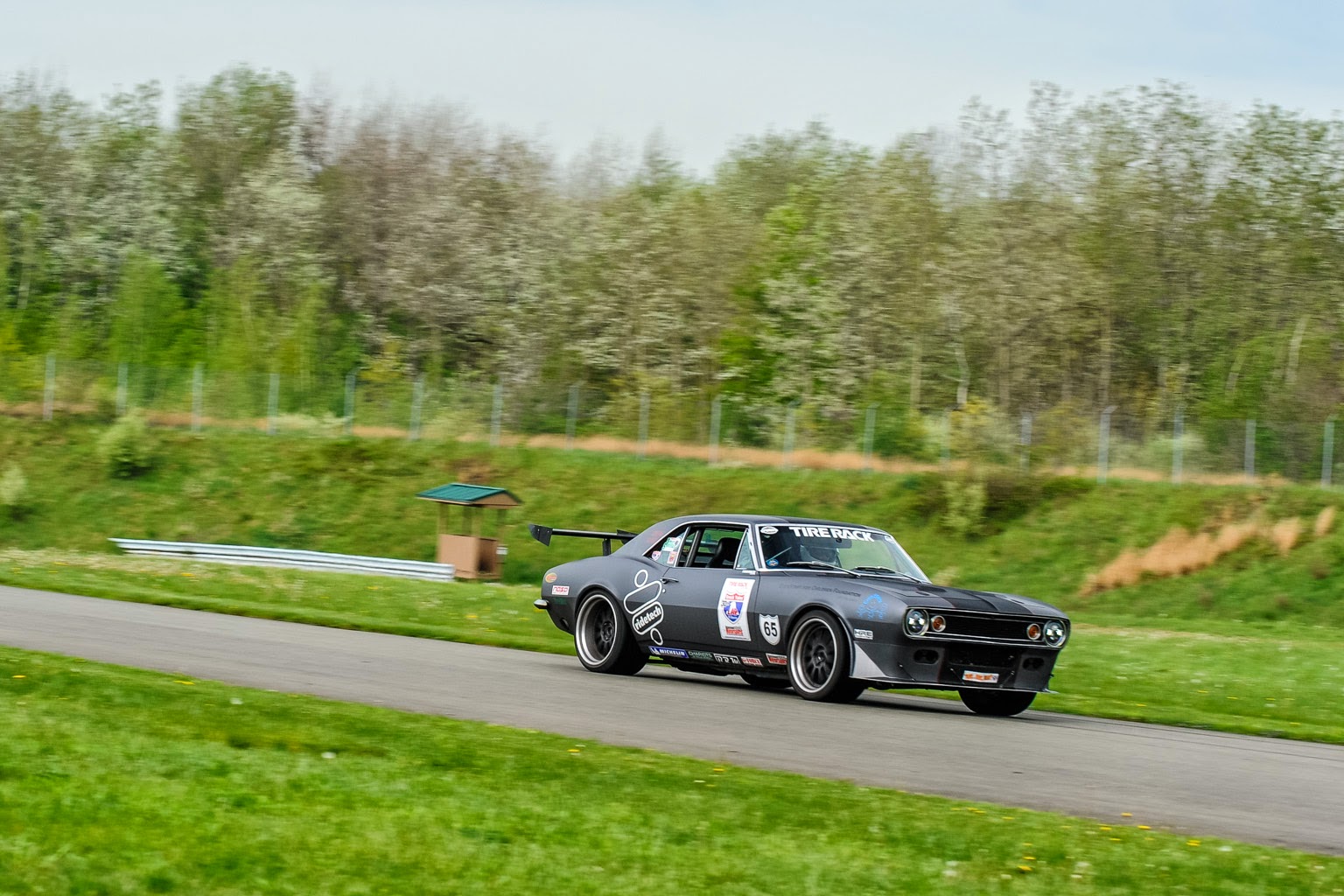Last weekend the Ultimate Street Car Association (USCA) and
fifty of the coolest street cars in America (and a couple from Canada) got
together at the historic Daytona International Speedway to participate in the
third event of the inaugural USCA season.
The weekend was split in to five disciplines following the very
successful USCA formula – a road rally, a day on the road course, two sessions
of autocrossing and two sessions of speed stop challenge along with a design
and engineering competition.
There are a bunch of really positive reviews about the
weekend that very accurately reflect most of the awesome highlights of the
weekend (Daytona under the lights!) and
there are several places that you can find a breakdown of “the numbers” from
the weekend (3650 laps by 50 competitors!) but this won’t be one of those. Don’t get me wrong – it was an awesome event
and I had a great time – but as most know or have probably heard my weekend
very nearly ended Saturday evening on the Rolex 24-hour course when I crashed –
putting the OLC into a concrete wall just after Rolex 4.
The day up to that point had been great – we had five
20-minute sessions on the road course and most of my “discomfort” hanging over
from last year’s One Lap of America stop at the track was gone and we were
heading out for two final sessions under the lights. In the afternoon I was able to experience the
indescribably uncomfortable sensation of passing on the high banks of the
NASCAR superspeedway on more than one occasion.
I think that the only thing more uncomfortable then passing someone on
the outside at 155 mph has to be passing someone on the inside at 155 mph –
it’s amazing that a thin yellow strip of paint can intimidate you more than a
four foot safer barrier with “Daytona” emblazed down it’s length.
The car was running well all day and we had a solid top-ten
time going with the potential to crack the top five (we wound up 8th
on the road course) and I was looking forward to a break from the 100 degree
heat to pick things up a bit. I went out
on the days sixth session with my Stilo helmet fixed to my HANS device and
belted in by my Willans 6-point harness… I came in from that same session in
the NASCAR ambulance with the OLC on the back of the same wrecker that had
carted some pretty famous racecars around over the years. Not the end of the session that I was
anticipating.
So what happened?
Long story short – the car got loose, the back end came around, the
front end got in the dirt and everything ended with the OLC in a concrete
wall. There are plenty of pictures and a
couple of videos from the crash and I’m happy to discuss what may or may not
have happened before or during the crash but the true story of the USCA and our
weekend at Daytona was what happened after the crash.
First off – a note about safety. The USCA splits cars in to three categories –
Novice, Intermediate, and Expert. Those
categories not only define the experience levels of the drivers (which is
always somewhat arbitrary at best) but the level of preparedness as well. I was running in the expert group and my
experience notwithstanding the USCA rules call for my car and safety gear to
meet an expert level of preparedness.
Driving suit, gloves, shoes, neck restraint, helmet, roll bar, fire
extinguisher are all mandatory in the Expert run group where drivers are given
more freedom and judgment then the other groups. I have been wearing the HANS device for a
little bit over a year now along with my lightweight Stilo helmet - I cannot
imagine running without either – I now feel uncomfortable in the car without my
HANS. There is a reason for all of this
gear and I demonstrated it on Saturday night – I spun the car at 120+ and nosed
in to the wall at a pretty decent rate of speed and walked away with nothing
more than a profound sense of disappointment.
I was checked out by the NASCAR paramedic and would have gone to the
infield care center (track policy following contact with immovable objects) had
it been open. Aside from an accelerated
heart rate and elevated BP I was fine.
Buy the right safety gear and use it – stuff happens. Now back to the car…
The wrecker met the ambulance back in our garage area and I
got my first look at the car. I new that
it hadn’t caught fire (there had been three guys with thankfully unused
extinguishers at the ready when I got out of the car) but on the truck it
looked like a mess. The driver’s front
was flat, the splitter was pulled under the car, the horn of the AME subframe
was sticking through the lower valance and of course the fender was about two
feet outside of where it was supposed to be.
The LED headlight was gone - as was the headlight bucket - and the rad
support was broken and resting on the down tube. To get the car off the wrecker
we needed to pry the valence up while the wrecked pulled forward. It was a sobering endeavour.
When we finally got the car off the truck and pushed in to
the garage the weight of the moment was really sinking in. I was 2,800 miles from home without a truck
and trailer and, at this point, my mind was reeling with the question of how I
was going to get the car fixed… or home… and what that would mean to the rest
of the season… or next season. Then the
TV folks came in and did their thing and then people started to arrive… and
that’s when the fun started.
It began with a quick evaluation of the damage – or the lack
thereof – and it snowballed from there.
I think that Rodney Prouty was probably the first guy there and the two
of us started looking things over.
Amazingly there were no fluids under the car, the radiator was intact,
and aside from the power steering reservoir cap missing there didn’t seem to be
any mechanical carnage. I briefly
considered trying to start the car – a bit of a Dale Sr. moment – but noticed
that the rad support had pushed backwards and my air box was against the crank
pulley. At this point more and more
folks are coming over and jumping in as we slowly start grabbing tools to pull
the (untouched!?) hood off and remove the fender to get a better look. With the fender out of the way we were able
to pull the rad support forwards and get the air box off the crank pulley
allowing me to try starting the car.
Amazingly (at the time) the car fired right up and that was when
everything changed…
By now the last of the cars were coming off the track from
the final session of the day and more and more folks were filtering in to my
garage area. I turned around and
suddenly there was a floor jack beside me (which we used to pry the valence off
the subframe)… a few minutes later the folks from RideTech wheeled their crash
cart over… which was followed by a new 315/30-18 Falken tire… and more
people. Our focus somehow changed from
assessing the damage to seeing what we could do to make the car mobile before
the decision was made to try to fix the car enough to finish the Daytona event.
Chad Reynolds – Mav-TV announcer and a hot rodder in every
sense of the word - was surveying the cast off parts and piped up that he
thought he could maybe get the fender useable and a few minutes later there
were two guys jumping up and down on the fender with Chad beating the tar out
of it with a 5-pound hammer. From that
point until the garage area closed is now just a blur but I would hazard to say
that at some points there were a dozen or more guys working on the car –
reshaping, repairing, fastening and zip tying hoses and wiring back. There is no doubt that I will miss some folks
but a hats off to everyone who made an extraordinary effort that night – most
of the staff of RideTech was there including Rodney, Brit, Greg, Josh and Bret;
Mike Copeland from Lingenfelter was elbows deep at one point, as was OPTIMA
Batteries’ Cameron Douglass. John
Parsons helped out, as did Ken, the trucker who hauled the OLC to Daytona and
countless other folks who I unfortunately wasn’t able to spend much time with
or thank properly.
When the Daytona security folks kicked us out at 11 the OLC
actually looked like a car… from the passenger side. As Rodney posted at one point – the car looks
fine… from the stands… We needed to get the tire replaced in the morning and
tie up some of the final loose ends and we had a chance to finish the weekend.
At 7 am Sunday morning I took the most unique “morning after
cab ride of shame” to the track and immediately set about stitching together
the sheet metal while patiently waiting for Pep boys to open to try to get a
new tire mounted and balanced… assuming that the Forgeline wheel had survived
the impact unscathed. During the 8 am
drivers meeting someone pulled the wheel and tire off and at 9 am we were at
Pep boys where a half hour later we left with sticky new tire and wheel with
nothing more than a scratch where some combination of concrete and fender
whacked it.
To bring a long story to a shorter conclusion… with a
patched up car held together by zip ties and vice grips and an alignment that
looked “mostly OKish” and felt fine in the parking lot I headed out to the
Speed Stop Challenge to see how things really felt. I made probably 10 runs on the SSC –
“gradually” pushing harder and harder until the electric fan died – before
heading back to the pits. The car seemed
OK (with some odd noises here and there) and the fact that we ended up 4th
in the SSC supported that low speed stuff was holding together. After a quick review and repair of a shorted
out fan wire I headed over to the Autocross to try something a bit
quicker. I got three runs in on the AX
before (regrettably) running out of gas… at which point I decided to call it a
day. There was room for improvement to
be sure but as the day continued it was clear that I wasn’t physically or
mentally in top form.
At the end of the day I don’t get to tell the story of
conquering Daytona but I can tell a much better story about how, with the help
of some great friends, I was able to conquer something much tougher.
My sincerest thanks to everyone who helped that night and to
all those who reached out; I am blessed – we are blessed – to belong to such an
awesome community.








































































































